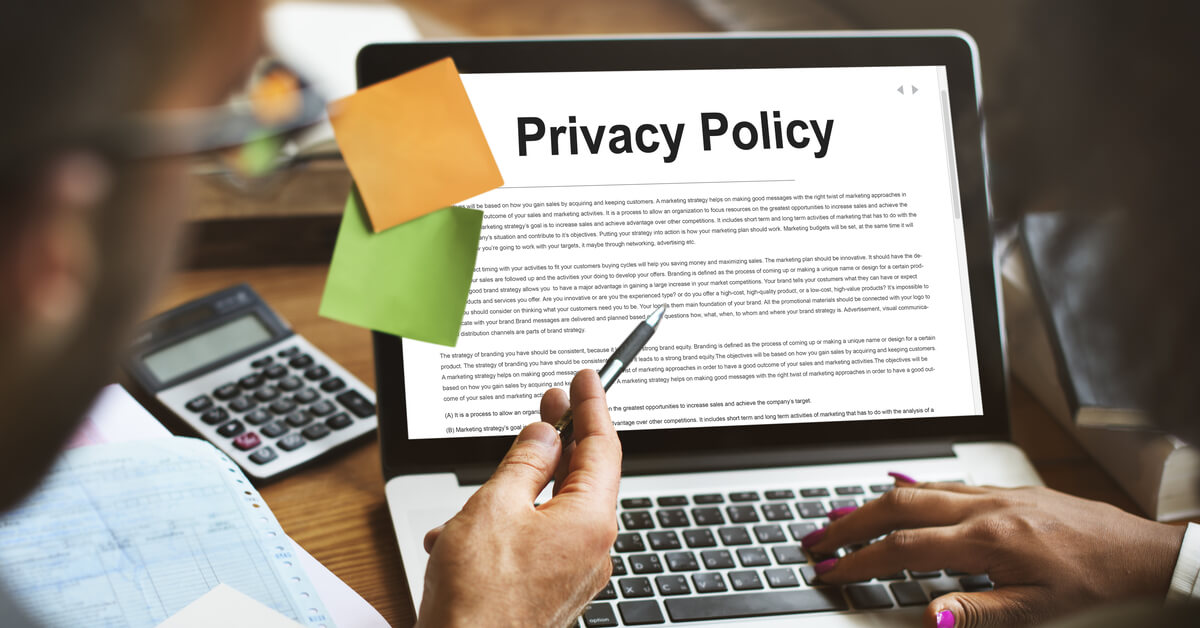What to Look For in a Privacy Policy
November 4th, 2019(4-min read)
So, you’ve just downloaded a new piece of software, signed up for a new service, or purchased a new piece of hardware that you’re looking forward to using. Most modern technological products or services that deal with your personal information won’t let you use them until you’ve agreed to their privacy policy or terms and conditions. If you’ve read an entire privacy policy, you’re definitely in the seemingly-odd minority. Even if you’re not planning on reading every privacy policy or terms and conditions document for every new product or service you use, there are a few essential spots you’ll want to read over while you’re skimming.
What is a Privacy Policy?
Simply put, a privacy policy is a legal document that discloses to users how their information is going to be used and saved by entity backing a product or service. Despite rarely being read by the consumer, the privacy policy (also known as a terms and conditions notice), not only informs consumers about how their information will be used, but can sometimes defer responsibly for lost or stolen data in the event of their systems becoming compromised.
What to Look For in a Privacy Policy
The professionals at Geeks to the Rescue recommend thoroughly reading any legal document you approve. However, we also know the likelihood of people doing such is low, so here are a few of our recommended sections to keep an eye out for if you are to skim the document.
The Introduction
Nestled in the introduction is much more valuable information than one may realize. The introduction often lists the key players of the organization — many may not be who you expected. The introduction will also provide information about their policies concerning collecting information from minors.
What Information is Collected
A tad further along in the privacy policy will mention what data of yours they will be collecting and sometimes an explanation as to why they need to receive it. Some of this information may not be anything you didn’t already understand. Other information collected may have much greater breadth than you imagined and are comfortable.
How Information is Collected
Knowing how the information is collected can be as eye-opening as what information is being collected. Some of this information collection is manual, but some may be automated by some other means.
How Information is Stored
How and where your information is being stored may be of a special significance. If your data is being stored in a database in a foreign country, this may limit your ability to access it or request that it be deleted following a compromising event. This would also mean that the retrieval or deletion of your data may not fall under United States jurisdiction.
Who to Contact
The privacy policy should include not only email addresses and phone numbers to use should you have questions about how your data is being used, but should also include a physical address. A physical address can more easily be tracked by authorities in the event of an instance of identity theft, which means its certainly something you’ll want to hold onto.
Remember to Save the Privacy Policy
If dealing with a less-well-known company or a new service, it’s a good idea to save a copy of the privacy policy or terms and conditions to which you agree if they change without your knowledge. A reputable company will notify you if these terms and conditions change, but having a copy for yourself of precisely what you agreed to is a great way to protect your information.
Don’t Let Just Anyone Fix It
If your computer is running slow, badly, or not at all, let the Tulsa-based computer repair specialists from Geeks to the Rescue bring it back to life.











